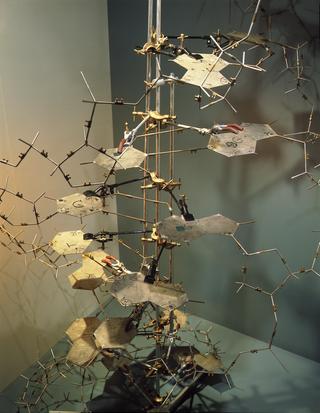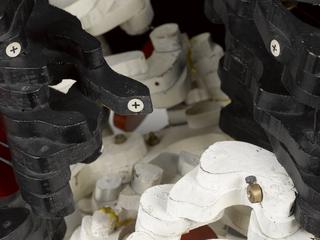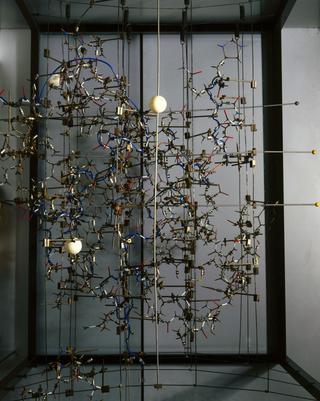

3 perspex tanks for gel electrophoresis, with platinum electrodes, used in chracterization of the gene for human blood factor VIII
Electrophoresis is a technique used in biochemistry to separate complex mix-tures of similar chemicals. These three Perspex tanks were used in research towards making bacteria produce the human blood factor, Factor VIII. This is needed by people with haemophilia, whose blood would not clot without it. This material is otherwise produced from human blood, presenting a risk of infection from blood-borne diseases such as AIDS. The process was achieved in 1984.
Details
- Category:
- Biochemistry
- Object Number:
- 1994-673
- Materials:
- electrode, platinum and boxes, perspex
- Measurements:
-
overall: 90 mm x 420 mm x 238 mm, 1.48kg
part 3: 104 mm x 203 mm x 83 mm, .36kg
part 2: 57 mm x 250 mm x 143 mm, .57kg
- credit:
- Genentech Inc.




